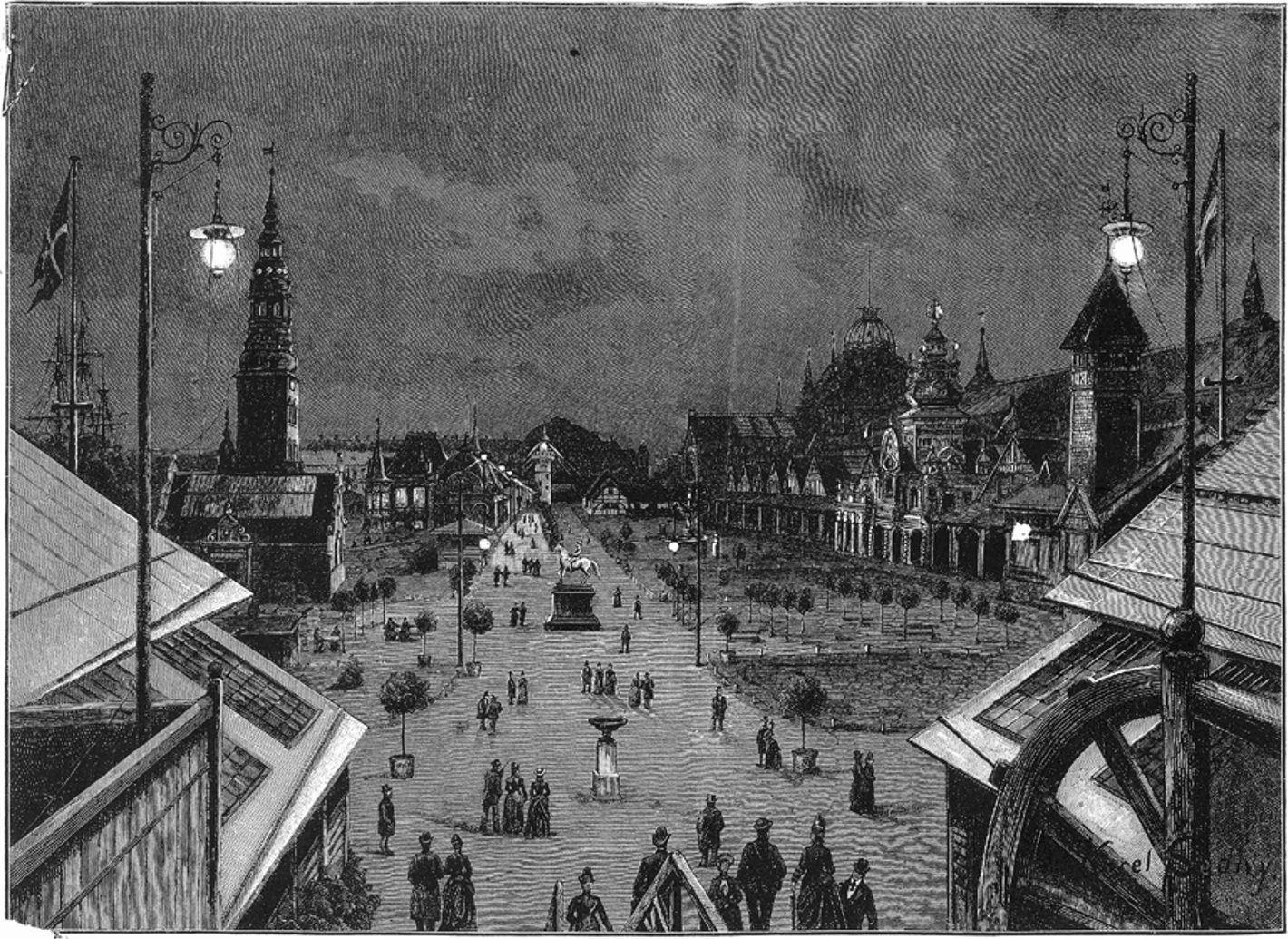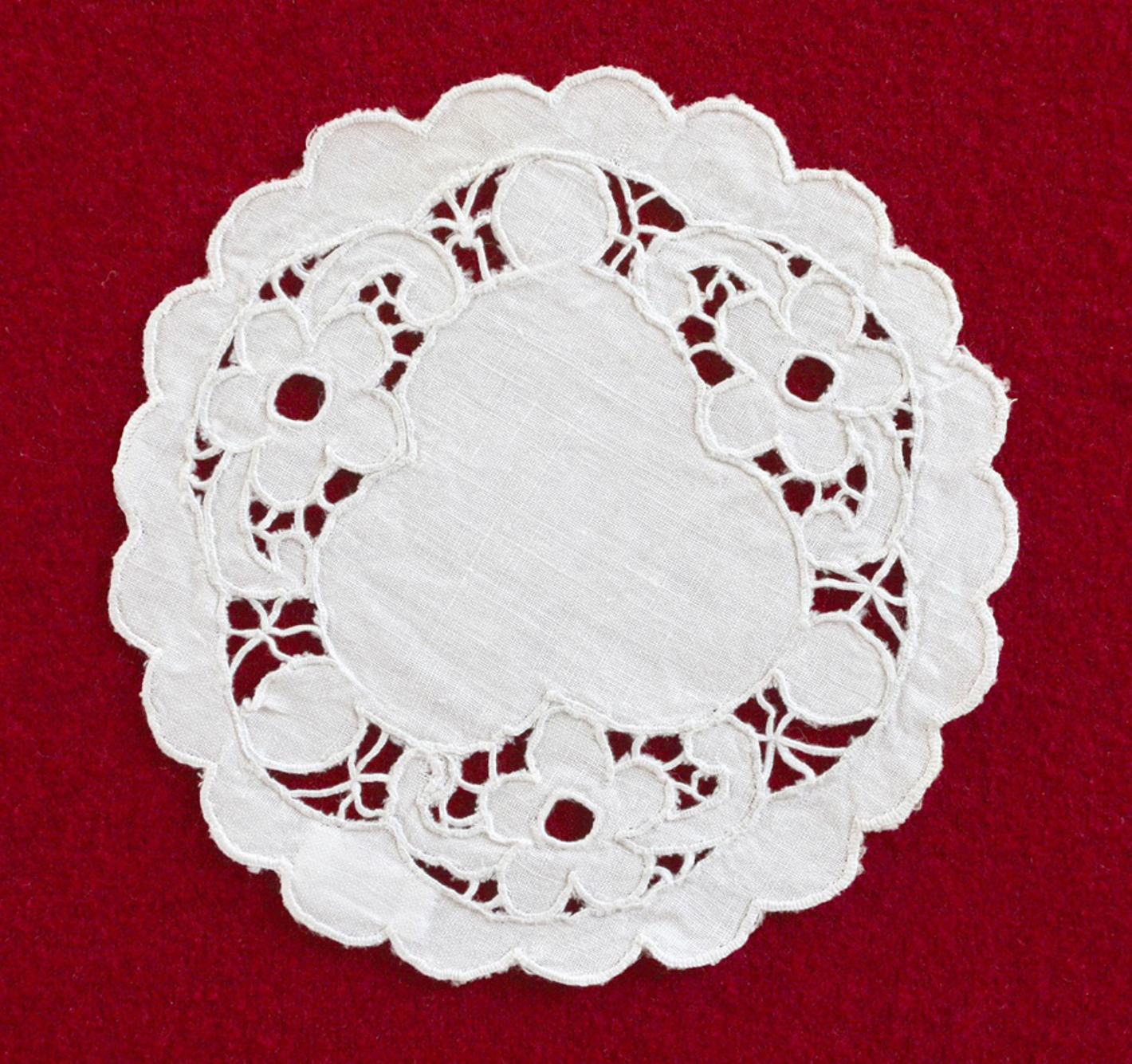World Exhibitions
The 19th century is known as the century of World Exhibitions, serving as the national and commercial window to the world during that period. Hedebo Embroidery was displayed at several of these exhibitions: the London World Exhibition in 1862, the Vienna Exhibition in 1873, the Paris Exhibition in 1877, the Chicago World’s Fair in 1892, and again in Paris in 1900. In 1862, Hedebo Embroidery was shown alongside a doll dressed in a Hedebo gown. In 1873 and 1877, Julie Augusta Valentiner, the lady of the large Gjeddesdal Manor on the Heath, exhibited Hedebo Embroidery stitched by local farm girls. In 1873, Mrs. Valentiner received an 'employee’s medal,' and in 1877, a bronze medal for the embroideries. In Chicago, it was particularly the popular 'artistically revived' version of Hedebo embroidery that represented Danish embroidery and received praise from the American press. In 1900, Hedebo Embroidery was showcased once again in Paris, although other forms of embroidery dominated the exhibition.
Foreign Embroidery Books
The Danish Hedebo Embroidery showcased at the 1877 World Exhibition is likely the reason a French embroidery encyclopedia from 1884 spoke highly of Hedebo Embroidery, both in terms of white embroidery and needle lace. At the beginning of the 20th century, English books on Hedebo Embroidery, especially Udklipshedebo, were published. At that time “Udklipshedebo” was deprecated in Denmark, whereas “Hvidsøm” and “Baldyring” were considered to be the original Hedebo Embroidery.
Cultural Heritage
Hedebo Embroidery is renowned among embroidery experts worldwide. Along with other white-on-white linen stitching, these embroideries are both unique and part of a shared cultural heritage, tracing back to the influence of the Byzantine Empire on southern Europe during medieval times. The sources of inspiration are not linear. The Vikings may have brought back embroideries that inspired the Hardanger embroideries, as well as the drawn-thread and counted-thread techniques of Hedebo Embroidery. The 'reticella' of Renaissance Italy likely served as the inspiration for the "Baldyring" variation of Hedebo Embroidery in the 19th century. Later, both French and English embroidery styles were integrated into Danish needle lace.

